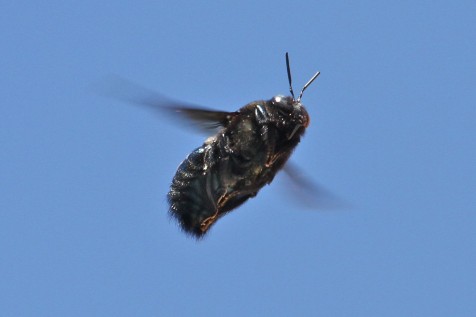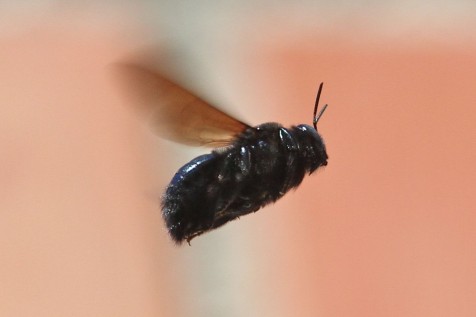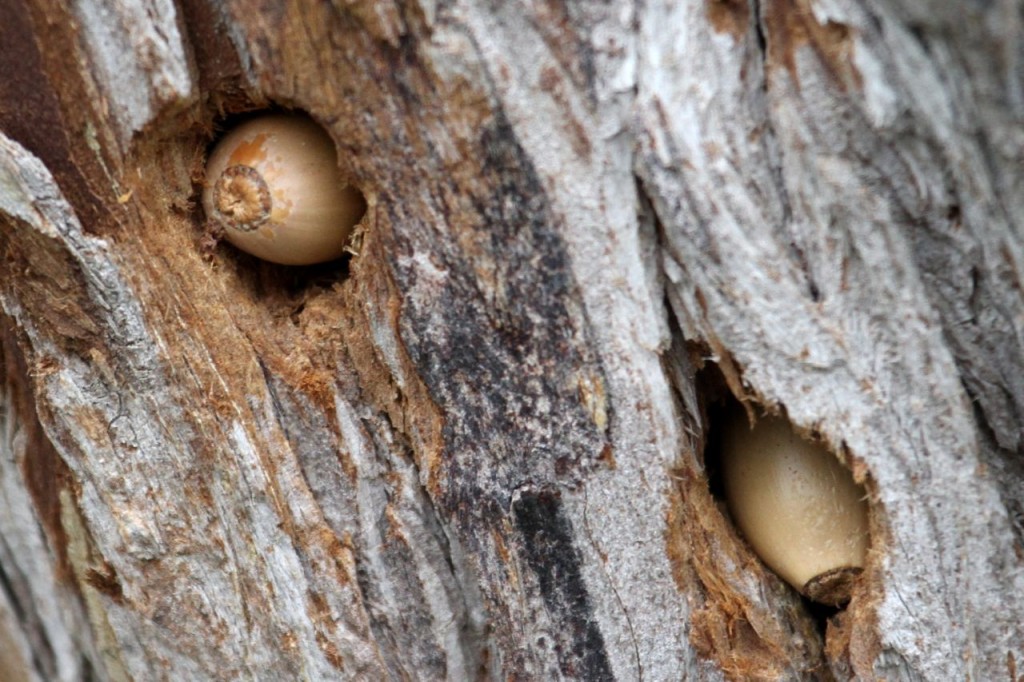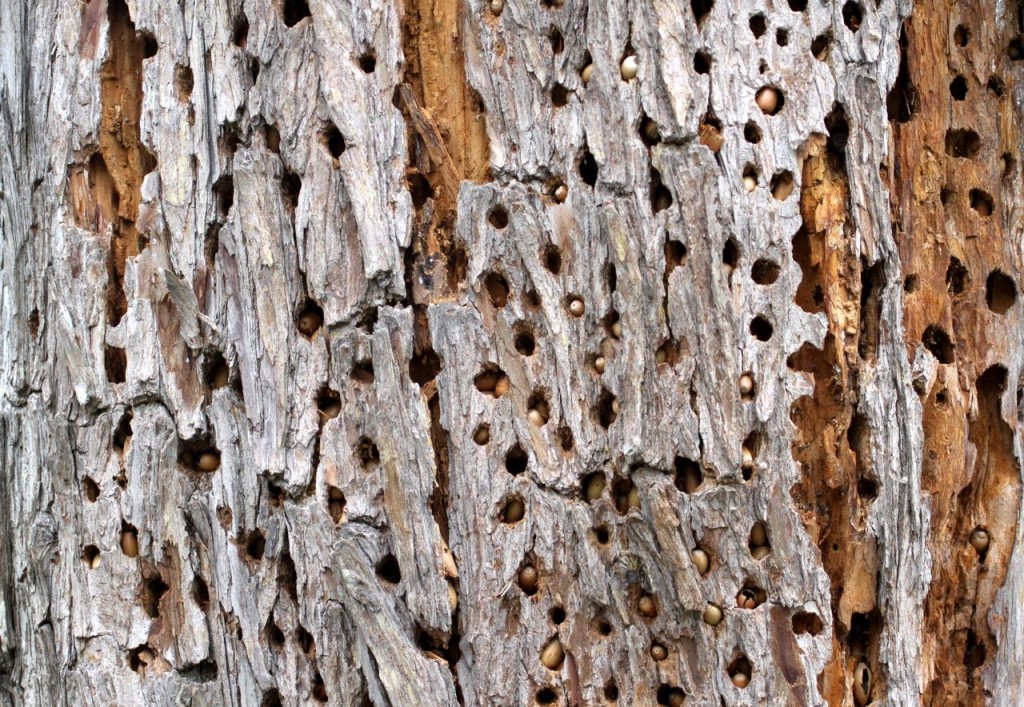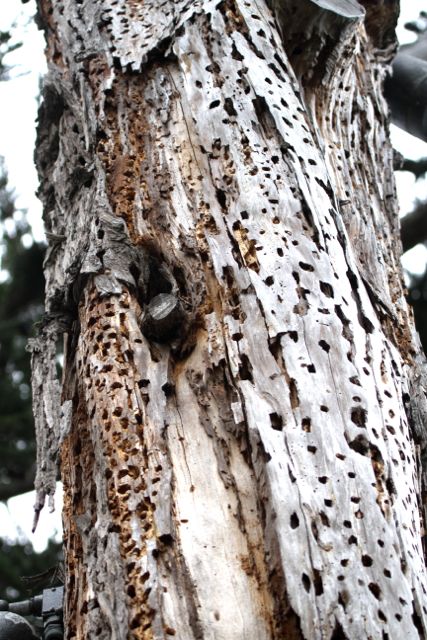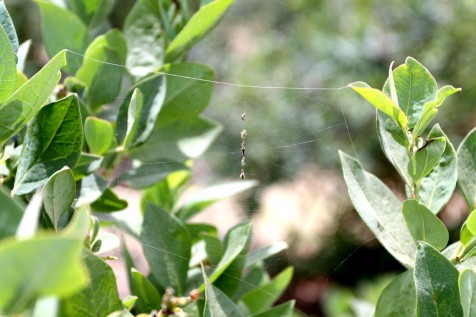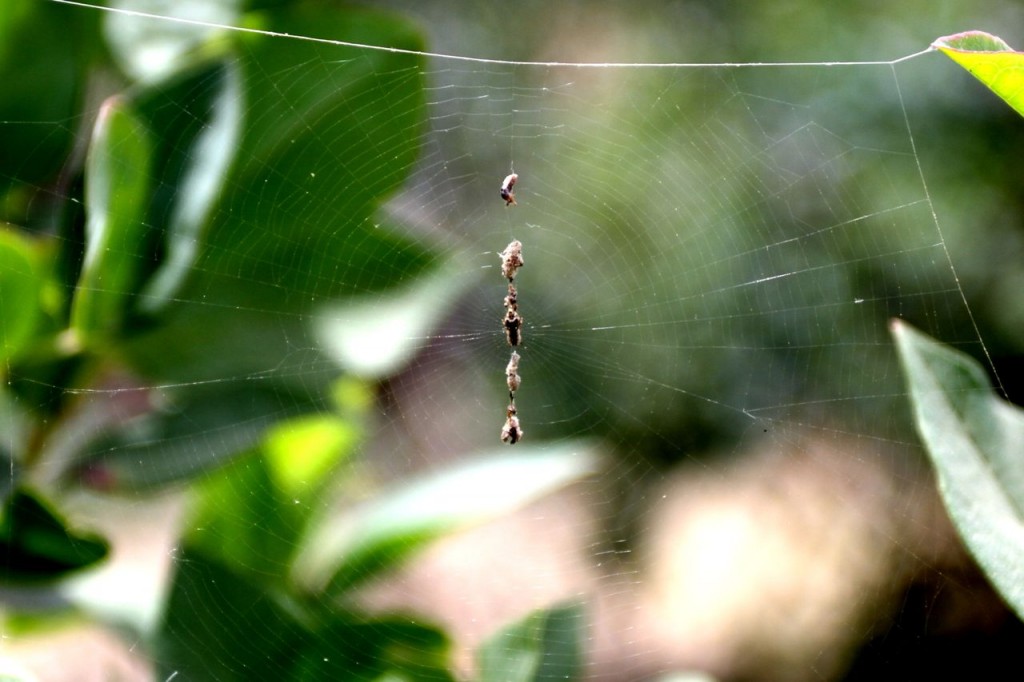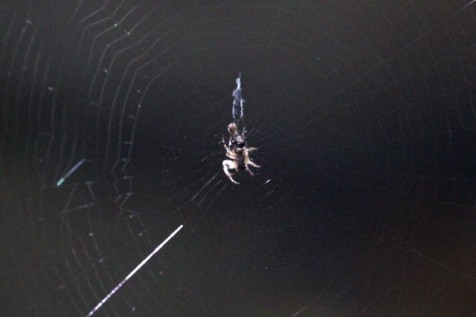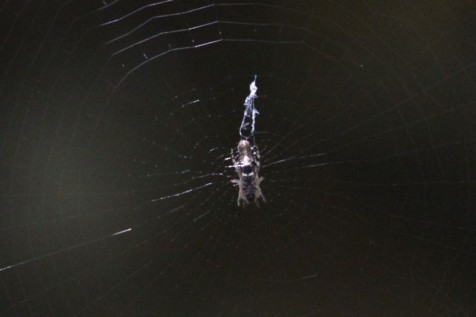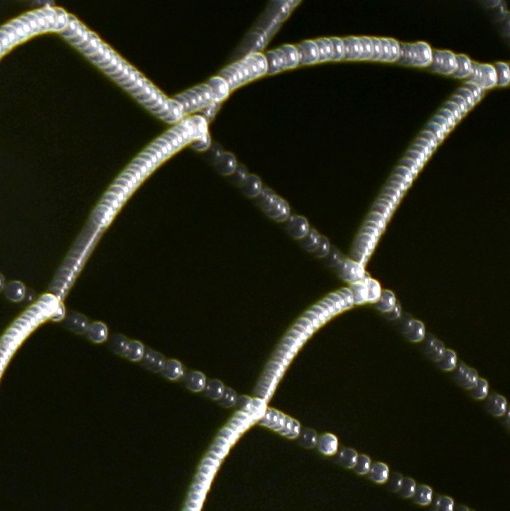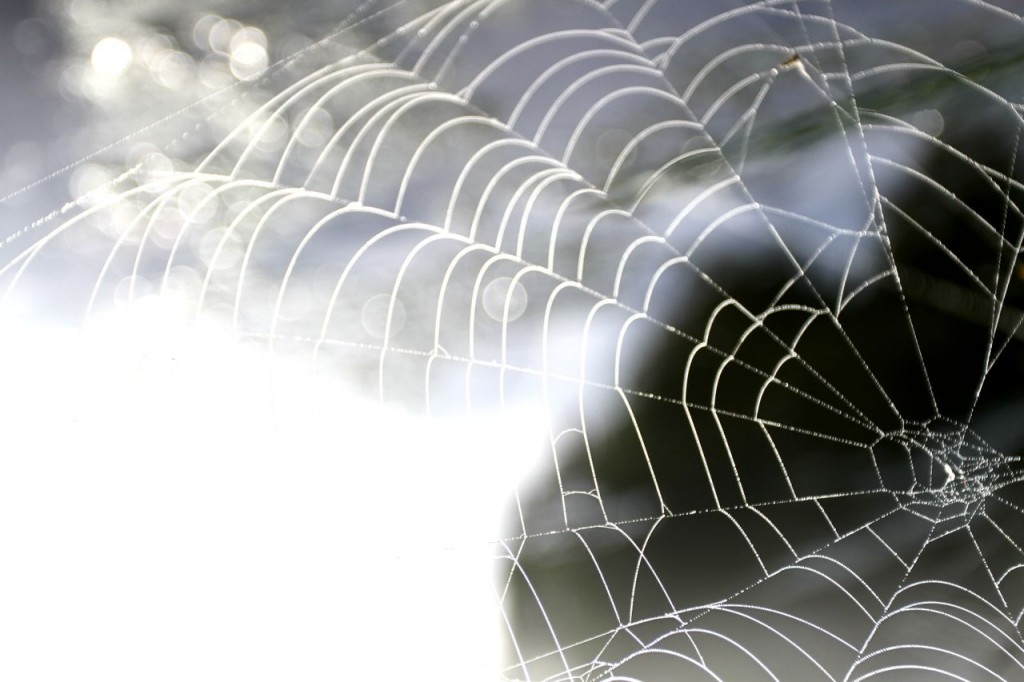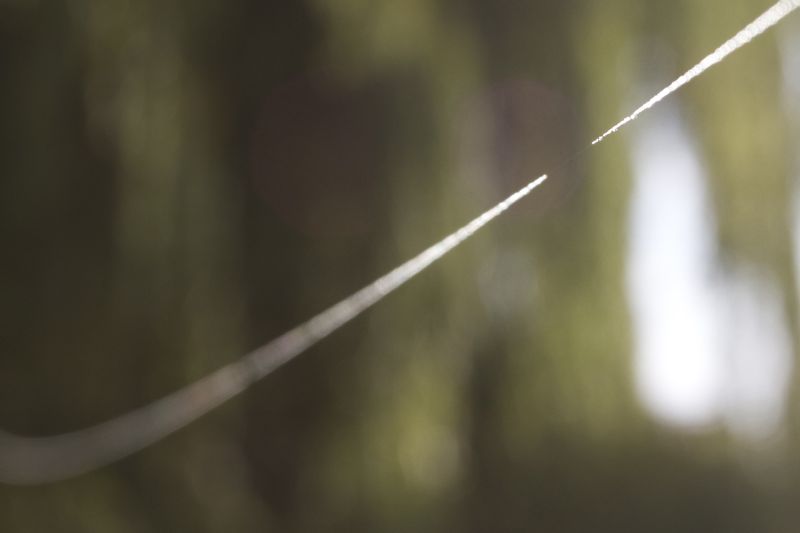Carpenter Bees look like Bumble Bees, but are black all over with an almost hairless abdomen. A penchant for boring into wooden structures to make their homes makes them unpopular with owners of wooden homes – understandably.
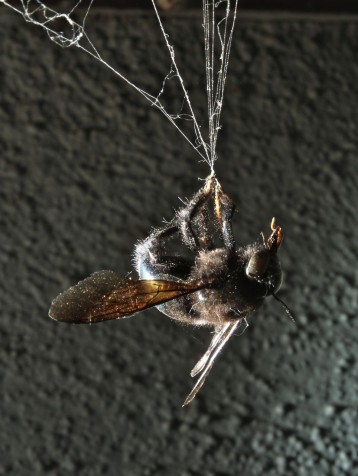
I snapped this one, dead, hanging directly over the back door porch. Which is a little worrying, seeing as the web it’s hanging from belongs to one of these guys:
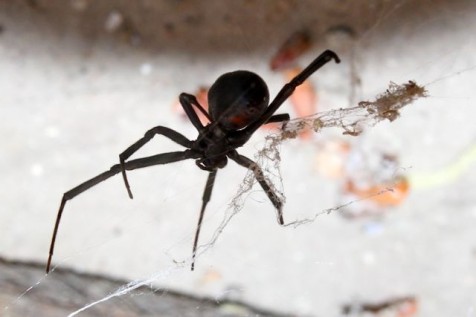
Recognizable by its bulbous abdomen and red hour-glass insignia, the Black Widow spider weaves a characteristically disheveled web. This Western Black Widow, Latrodectus hesperus, is the only kind found in California. (Reminder again that I’m visiting the US at the mo’; we don’t get these in the UK – thankfully.)
The popular myth that a Black Widow bite will, guaranteed, kill a person outright dead everytime seems a bit overblown (ref. University of California.). But reports of painful muscle cramps, fever etc. suggest gloves are a good idea if you’re clearing out that dark corner of the garage; that’s where we found this guy.
See how in the top photo the web shines so nicely in the backlight? That property, combined with the phenomenal strength of spider silk, wasn’t lost on the US military who, during World War II, harvested Black Widow spider silk for use as the cross-hairs of gun-sights (ref. Popular Science March 1944)
Here are some Carpenter Bees in happier times:
